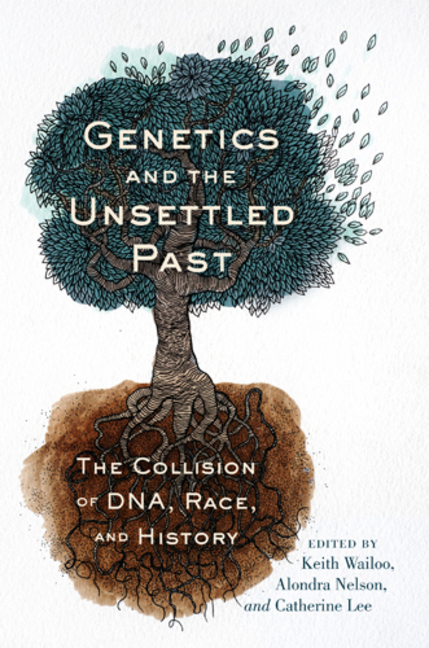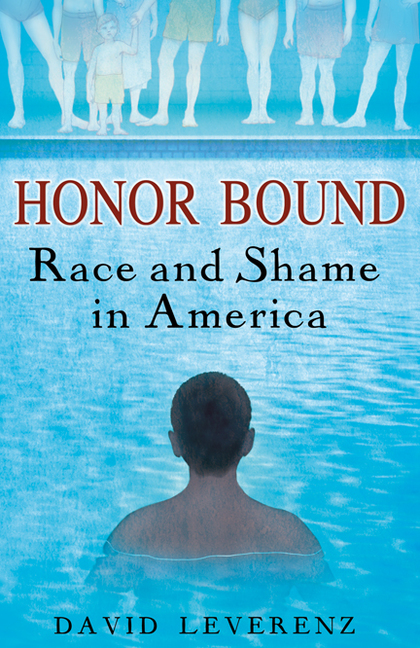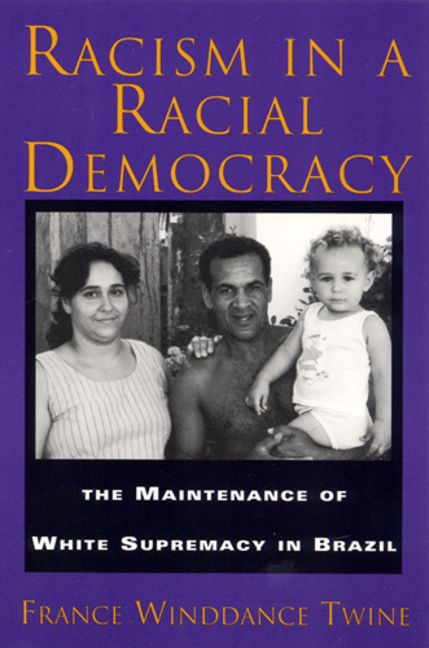“Entirely Black Verse from Him Would Succeed”: Minstrel Realism and William Dean HowellsPosted in Articles, History, Literary/Artistic Criticism, Media Archive on 2011-12-16 03:56Z by Steven |
“Entirely Black Verse from Him Would Succeed”: Minstrel Realism and William Dean Howells
Nineteenth-Century Literature
Volume 59, Number 4 (March 2005)
pages 494-525
DOI: 10.1525/ncl.2005.59.4.494
Gene Jarrett, Associate Professor of English
Boston University
In the early months of 1896, James A. Herne returned to his hotel in Toledo, Ohio, the city where he was directing and performing in his most popular play to date, Shore Acres. The hotel clerk informed the preeminent actor and playwright that one Paul Laurence Dunbar had left him a gift. Indeed, after attending and enjoying Shore Acres, Dunbar decided to leave Herne a complimentary copy of his second and latest book, Majors and Minors (1896). Fortunately for the African American poet, Herne was well acquainted with the most authoritative literary reviewer, cultural critic, editor, and publisher at the time, the so-called Dean of American Letters, William Howells. Howells was already a household name for mentoring and helping to publish the works of such well-known writers as George Washington Cable, Henry James, Sarah Orne Jewett, Joel Chandler Harris, and Mark Twain. Readers of Harper’s Weekly in particular had come to know and appreciate Howells’s columns, which for a decade had epitomized the magazine’s long-standing identification and review of instructive and entertaining literature. When Dunbar dropped off the book at Herne’s hotel, the thought that Herne would hand Majors and Minors to Howells, who would then review the book for Harper’s Weekly and thereby launch Dunbar’s literary career, was far-fetched, to say the least.
Remarkably, these events occurred in this exact way. Herne did not respond to Dunbar while Shore Acres was playing in Toledo, but he did later in Detroit, where the play relocated and from which he sent the poet a letter: “While at Toledo a copy of your poems was left at my hotel by a Mr. Childs,” Herne wrote; “I tried very hard to find Mr. Childs to learn more of you. Your poems are wonderful. I shall acquaint William Dean Howells and other literary people with them. They are new to me and may be to them.” Herne passed Majors and Minors on to Howells, who decided to review the book in the 27 June 1896 issue of Harper’s Weekly.
Majors and Minors was “new” to both Herne and Howells not because of its two main genres, British Romantic and American local-color poetry: Herne was well read in American literature, while Howells specialized in classic and contemporaneous Western literature. Actually, the frontispiece of Majors and Minors, an image of Dunbar at age eighteen, made the poems “new” (see Figure 1). Howells found the image so compelling that, for the benefit of his readers, he decided to describe Dunbar’s phenotype and physiognomy, those biological traits that affirmed the poet as a “pure African type.” So captivated was Howells by the frontispiece and its implications that, reportedly, he wrote a substantial portion of the review—the sections regarding the idea of someone like Dunbar—without yet reading all of the poems in the book. For Howells the frontispiece verified Dunbar’s identity as an African descendant born in the postbellum New World. The image influenced Howells’s encounter with Majors and Minors in much the same way that a “paratext” influences a reader’s encounter with a text, although Dunbar’s book lacks a comprehensive paratextual frame. Aside from the printer’s information (“Hadley & Hadley, Toledo, Ohio”) and the dedication to Dunbar’s mother, Majors and Minors, as Howells puts it in the review, was “dateless, placeless, without a publisher.” Initially unable to “place” the work, Howells focused on the discernibly Africanphysiognomy and dark phenotype in the frontispiece in order to “place” Dunbar and his work…
The frontispiece created certain expectations for Howells about the kind of writing that should exist in Majors and Minors Whenever Dunbar’s book defied these expectations, skepticism tempered Howells’s enthusiasm. In his review Howells suggests that, in order to assure both critical acclaim and commercial success, the poet should dedicate himself to writing verses only in “Black” dialect, similar to those filling the second and smaller section of Majors and Minors. For Dunbar is “most himself,” Howells insists, when he writes in such informal or colloquial English. Accordingly, he maintains that Dunbar should refrain from writing poems in formal or “literary” English, such as those filling the first and larger section of the book. Howells subtly reiterates this assessment one month later in a letter to Ripley Hitchcock, then serving as literary editor and adviser at D. Appleton and Company. Dated 29 July 1896, the letter belongs to a long-running conversation between Howells and Hitchcock about promising American writers, most notably Stephen Crane. After informing Hitchcock of his laudatory review of Crane’s two books, Maggie: A Girl of the Streets (1893) and The Red Badge of Courage (1895), in the previous Sunday’s World, Howells closes the letter with a couple of sentences about Dunbar: “Major Pond is going to platform young Dunbar next winter, and I believe a book of entirely black verse from him would succeed. My notice raised such interest.”‘
These words are remarkable for three reasons. First, Howells is referring to Major James A. Pond, a prestigious literary agent who had previously directed the lecture tours of Twain and Cable, among other popular American writers. Dunbar had secured Major Pond as an agent by the time he decided to travel to England in February 1897 to lecture and recite his poems. Second, the reason that Dunbar interested Major Pond in the first place had much to do with that “notice”—Howells’s term for his review of Majors and Minors in Harper’s Weekly. Third, and most important, Howells’s assertion that “a book of entirely black verse from [Dunbar] would succeed” values the racial authenticity of African American literature, particularly the orthography of dialect that came from the pen of a “pure African type.” This appreciation, I argue, belongs to a larger critical and commercial demand for what I call “minstrel realism” in postbellum nineteenth-century American culture.
Although “minstrel realism” sounds oxymoronic, it makes sense when placed within the proper context of how certain ideologies of race (racialism) and realism interacted in the nineteenth century. In this essay I intend to show that the racialism of blackface minstrelsy, performed by individuals darkened usually by burnt cork, created a cultural precondition in which postbellum audiences regarded Black minstrelsy (that is, minstrelsy performed by Blacks) as realistic. This reaction resulted from the commercialization of Black minstrelsy in American culture as an avant-garde cultural performance of racial authenticity. An analogous reaction occurred upon the publication of Majors and Minors in 1896. Howells and other reviewers, editors, and publishers appreciated the particular section “Humor and Dialect” for what happened to be the protocols of minstrel realism: the humor and dialect of African American culture. My argument has several implications. Minstrel realism united realism with what George M. Fredrickson calls “romantic racialism,”” a relationship that flies in the face of the historical conflict between these genres in American culture. While characterizing Anglo-American literary realism as the eschewal of romance and sentiment, Howells in particular defined African American literary realism in these very terms. This apparent inconsistency points to the racialism that helped to perpetuate this definition in the dramatic and literary cultures of minstrelsy.
In this essay I urge another re-categorization of American literary realism. Elizabeth Ammons has already recommended an expansion of this genre to include a variety of realisms, to move beyond the “white, middle-class ideas” of Howells, Henry James, Stephen Crane, and Edith Wharton, among others, and accommodate the diverse approaches of African American, Native American, and Chinese American authors. But Howells’s notion of literary realism included Dunbar as well as other “ethnic minority” writers, such as Charles Chesnutt and Abraham Cahan. In order to explain, then, the fact that Howells cites both Crane and Dunbar in the same letter to Hitchcock as the avant-garde of American literary realism, I suggest that, for Howells and his contemporaries, racial authenticity determined the aesthetic value of literary realism. The contrasting racial identities of Crane and Dunbar, for example, created different sets of expectations for the kinds of realism that they could and should have produced…
…Of all these writers, only Douglass, Chesnutt, Dumas, and Pushkin appeared in essays that Howells wrote elsewhere. None, as we shall soon see, could match Dunbar’s literary potential in Howells’s eyes-not even Chesnutt. Though Chesnutt was a writer who was well respected for publishing in the Atlantic Monthly several Black-dialect short stories (which he would later compile for his first book, The Conjure Woman [1899]), he did not appear as racially authentic as he sounded in these volumes. In a to November 1901 letter to Henry Black [Blake?] Fuller, a Chicago novelist, Howells suggests that Chesnutt could pass for White: “You know he is a negro, though you wouldn’t know it from seeing him.” Thinking similarly, anthologists in the early twentieth century tended to omit Chesnutt from the African American canon, due to his ostensible lack of Black authenticity (see Figure 2). Thus, Dunbar’s impact on African American canon formation at the turn of the century-a period spanning from his rise to prominence in 1896 to the eventual disappearance of his work from national periodicals and from anthologized canons of American literature by World War I-exceeded Chesnutt’s, insofar as Dunbar’s perceived racial “purity” enabled critics and publishers to authenticate his dialect writing in ways initially inapplicable to the dialect writing of Chesnutt and other African American authors of ostensibly mixed racial ancestry.
In Howells’s eyes, the sort of interracial complexion that characterized not only Chesnutt, but also Dumas and Pushkin, disqualified them from the tradition of authentic African American literature. In his introduction to Dunbar’s third book of poems, Lyrics of Lowly Life (1896)-an introduction that incorporates but also modifies his review of Majors and Minors—Howells argues that though Dumas and Pushkin antedated Dunbar as renowned writers of African descent, “these were both mulattoes, who might have been supposed to derive their qualities from white blood … and who were the creatures of an environment more favorable to their literary development.” Dunbar, by contrast, was more authentic:
the father and mother of the first poet of his race in our language were negroes without admixture of white blood….
… Paul Dunbar was the only man of pure African blood and of American civilization to feel the negro life aesthetically and express it lyrically….
… There is a precious difference of temperament between the races which it would be a great pity ever to lose, and … this is best preserved and most charmingly suggested by Mr. Dunbar in those pieces of his where he studies the moods and traits of his race in its own accent of our English.
(“Introduction,” pp. vii-ix)
Howells’s investment in the discourse of blood in his introduction to Lyrics of Lowly Life followed in the wake of the Supreme Court decision for Plessy v. Ferguson, which legalized the biological discourse of interracialism and supported public notions that one could subject racial identity to biological measurement. This discourse both pervaded the literary criticism and art of African American authors and determined the politics of racial representation. By the time that Howells wrote his introduction to Lyrics of Lowly Life between September and December 1896, the biological language of Plessy v. Ferguson had already seeped into American popular consciousness for close to half a year. For Howells one drop of “Black blood” did not so much detract from the intellectual potency of “White blood”; rather, this drop became, in its “unmixed” state, a racial virtue—just as it was in the minstrel industry…
Read the entire article here.




